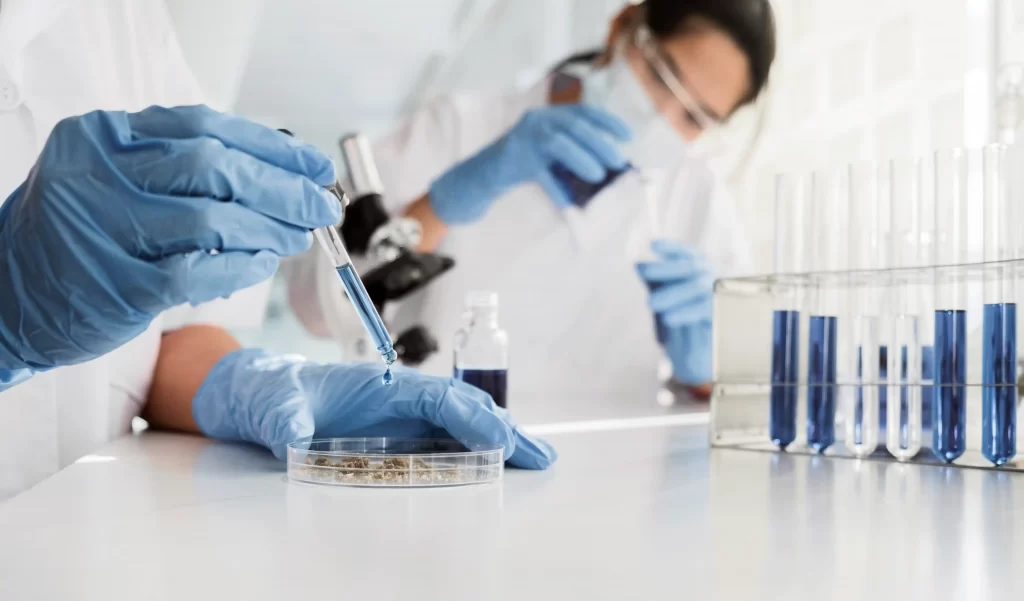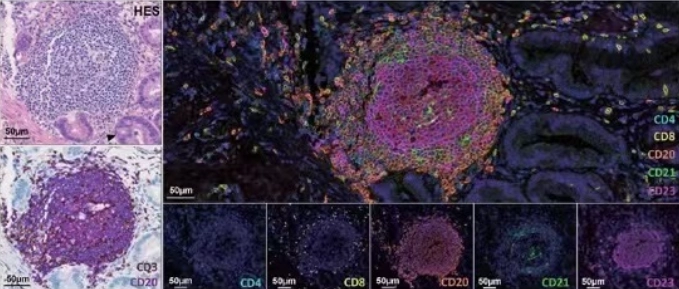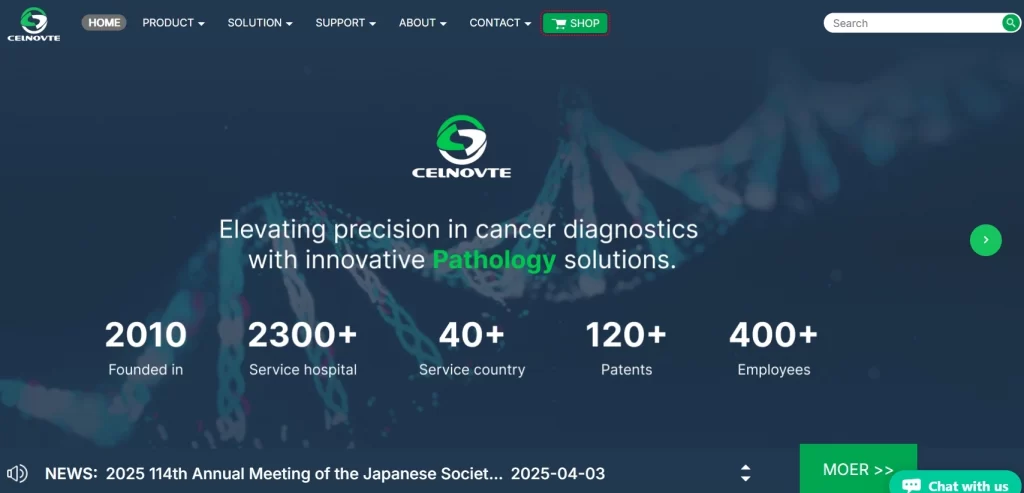How mIHC Transforms Drug Development and Clinical Pathology

By admin
In the fast-changing world of drug development and clinical pathology, accuracy and speed are super important. Scientists and doctors need tools that give clear, deep insights into tricky biological systems while making work easier.
The Multiplex Immunohistochemical (mIHC) Kit is a big deal, letting people spot several biomarkers in one tissue sample. This solves major problems in early drug tests and disease diagnosis, like checking drug targets or understanding complex diseases.
Why mIHC Is a Big Deal in Biomedical Research
The power to check multiple biomarkers at once is a huge step up from old-school single-marker immunohistochemistry (IHC). mIHC tackles key issues in drug development and clinical pathology by giving detailed, multi-layered data from small tissue samples. This is super helpful when tissue is limited, like in biopsies or early lab studies. By letting scientists and doctors see and measure several molecular targets in their exact spots, mIHC helps them better understand disease processes and treatment effects.
Top Perks of mIHC in Research and Diagnostics
- Better Biomarker Checking: mIHC can spot 6–8 biomarkers, like CD3, CD8, PD-L1, or FoxP3, in one tissue slice, keeping the sample safe.
- Keeping Spatial Details: Unlike other multi-marker methods, mIHC shows where cells are located, which is key for studying tumor surroundings or tissue structure.
- Clear and Trustworthy Results: Top-notch mIHC kits give steady, accurate data, cutting down on wrong results.
- Faster Workflows: Automated staining and imaging tools save time and effort in busy labs or clinics.
- Saves Money: By using fewer tissue slices, mIHC makes better use of resources, which matters in research and medical settings.
These benefits make mIHC a must-have tool for tackling tough biomedical challenges, especially in drug development and clinical pathology.
mIHC in Drug Development: Figuring Out How Drugs Work
In early drug development, understanding how a drug works is key to moving it forward. mIHC plays a big role by helping researchers check drug targets and see treatment effects clearly.
Checking Drug Targets with mIHC
One main use of mIHC in drug development is making sure drug targets are present. For example, in cancer research, scientists need to confirm immune checkpoints like PD-L1 or CTLA-4 in tumor tissues. mIHC lets them stain these markers along with immune cell markers, like CD8+ T cells or CD163+ macrophages, all at once. This gives a full picture of the tumor environment. It helps researchers:
Verify if targets are in specific cells.
See where targets are compared to immune cells.
Spot possible side effects early.
For instance, in a lab study of a new cancer treatment, mIHC might show if a drug boosts CD8+ T-cell activity while lowering FoxP3+ regulatory T cells. This shows how well the drug works.
Making Clinical Trials Better
mIHC also helps pick the right patients for clinical trials. By looking at biomarker patterns, researchers can find patients likely to benefit from a drug. For example, in a trial for a PD-1 blocker, mIHC can measure PD-L1 levels alongside other immune markers to predict success. This cuts trial costs by focusing on the right patients and boosts success by testing drugs on those most likely to respond.
|
Use Case |
How mIHC Helps |
|
Target Checking |
Confirms drug targets, like PD-L1 or HER2, in specific tissue areas. |
|
Patient Selection |
Finds biomarker patterns to choose trial participants. |
|
Drug Effect Studies |
Shows how cells interact and how drugs work in tissues. |
|
Safety Checks |
Spots unwanted changes in biomarkers to catch side effects. |
mIHC in Clinical Pathology: Improving Disease Diagnosis
In clinical pathology, mIHC is changing how complex diseases are identified and understood. By giving a detailed molecular map of tissue samples, mIHC helps spot disease types and predict outcomes, leading to better patient care.
Sorting Out Complex Disease Types
Pinpointing disease types is key to choosing the right treatments. For example, in breast cancer, mIHC can detect markers like HER2, ER, PR, and Ki-67 in one tissue slice. This full profile helps pathologists:
Tell apart aggressive and less aggressive disease types.
Find rare or mixed types that single-marker IHC might miss.
Guide treatment choices, like picking targeted therapies.
In pancreatic cancer, mIHC can map immune cells, like CD20+ B cells or CD4+ T cells, alongside tumor markers like Cytokeratin. This shows how tumors and immune cells interact, helping predict outcomes and choose treatments.
Finding Markers for Disease Outcomes
mIHC is great for spotting biomarkers that show how a disease might progress. For example, in lung cancer, high PD-L1 levels with low CD8+ T-cell presence might mean a worse outcome. By measuring these markers in one test, mIHC lets pathologists:
Check the importance of multiple markers at once.
Track changes in markers over time, like before and after treatment.
Help create tests for precision medicine.
This is especially important for diseases with lots of differences, where single-marker tests often aren’t enough.
About Celnovte Biotech: A Leader in mIHC Solutions
Celnovte Biotech is a trusted name in medical devices, focusing on immunohistochemistry tools, including the advanced Multiplex Immunohistochemical (mIHC) Kit. With a mission to push precision medicine forward, Celnovte offers high-quality products like mIHC kits, tissue processors, and staining systems. These tools help researchers and doctors get accurate, reliable results. Their mIHC kits work smoothly with automated systems, offering great sensitivity and making them a top choice for drug development and clinical pathology worldwide.
FAQs: Common Questions About mIHC
Q1: What’s an mIHC kit, and how is it different from regular IHC?
A: An mIHC kit lets you detect 6–8 biomarkers in one tissue slice. Regular IHC only checks one marker per slide. mIHC saves tissue, shows where cells are, and gives more complete data for research and diagnosis.
Q2: How does mIHC help with drug development?
A: mIHC checks drug targets, studies how drugs work, and picks patients for trials. By looking at multiple biomarkers together, it shows how drugs affect tissues, speeding up development.
Q3: Can mIHC make diagnosing diseases more accurate?
A: Yes, mIHC improves accuracy by profiling disease types and outcome markers. It helps doctors sort out complex diseases and choose treatments based on multi-marker data.
Q4: Which diseases benefit most from mIHC?
A: mIHC is super helpful for varied diseases like cancer, autoimmune issues, and brain disorders, where multiple markers and cell interactions need to be studied at once.
Q5: Does mIHC work with automated systems?
A: Most mIHC kits are made to work with automated staining and imaging tools. This ensures fast, reliable results with less hands-on work.
Start Using mIHC for Better Results
The amazing power of mIHC comes from its ability to give detailed, useful insights from one tissue sample. Whether you’re a scientist checking drug targets, a doctor diagnosing tough diseases, or a biotech pro improving trials, mIHC offers the accuracy and speed you need for great results. Try mIHC in your research or diagnostic work today. Visit Celnovte Biotech to check out their top-notch mIHC solutions and take your tissue analysis to the next level.
RELATED PRODUCTS









